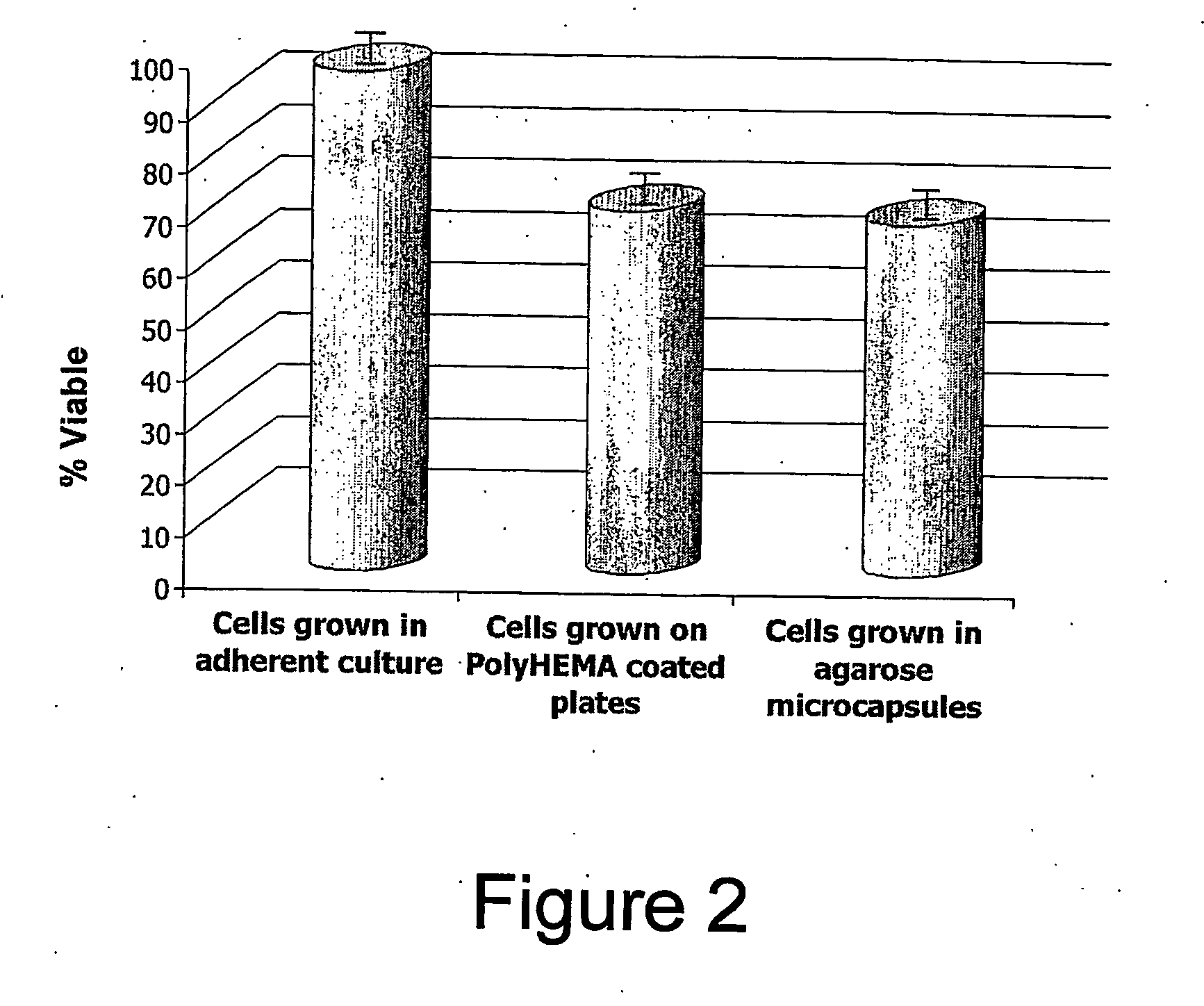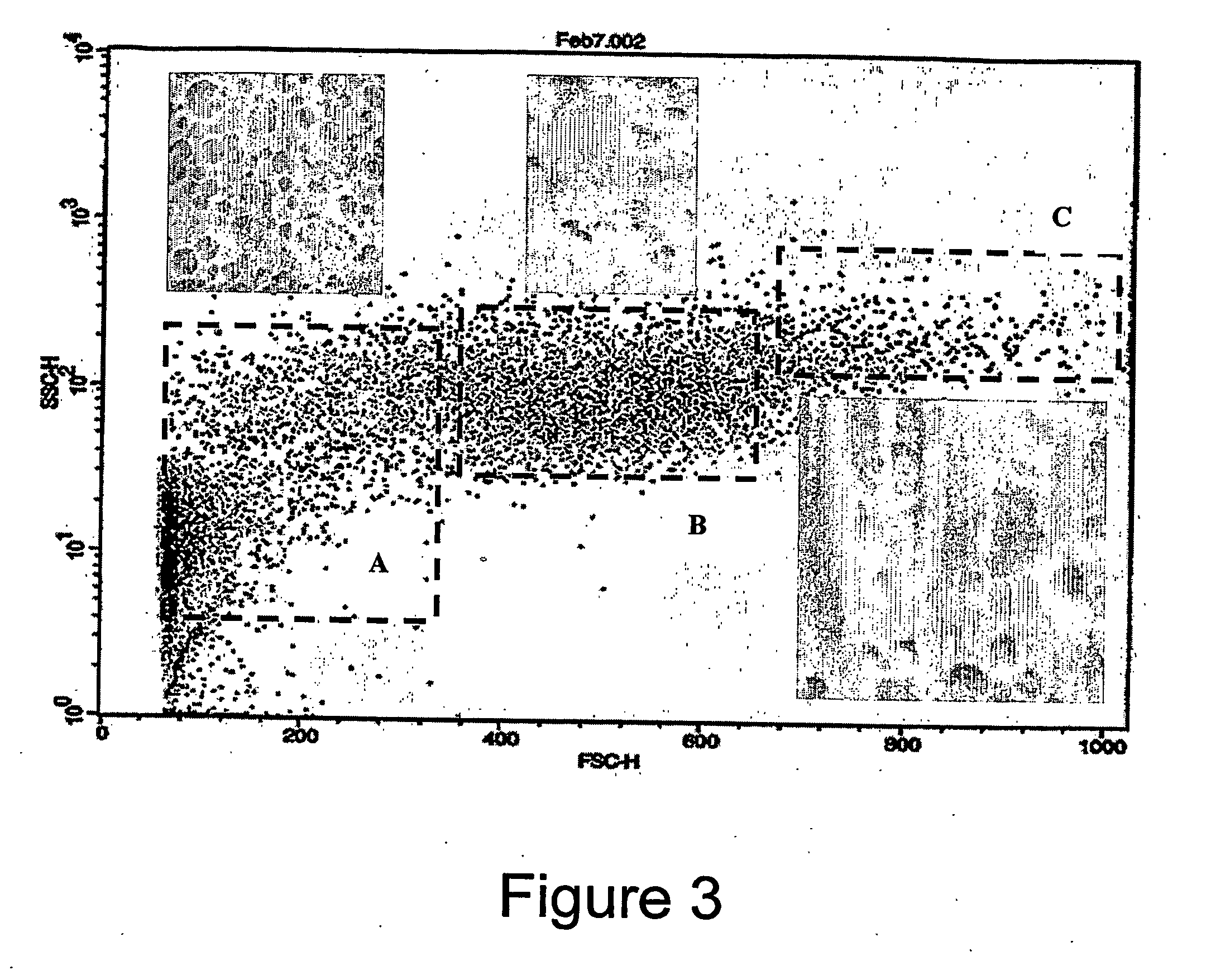Encapsulated cell therapy
a cell therapy and encapsulation technology, applied in the field of encapsulation cell therapy, can solve the problems of prior art the immune system still rejects the transplanted cells, and the prior art is deficient in encapsulation methods
- Summary
- Abstract
- Description
- Claims
- Application Information
AI Technical Summary
Benefits of technology
Problems solved by technology
Method used
Image
Examples
example 1
Behavious and Viability of Encapsulated Cells
[0119] Rat fibroblasts were individually encapsulated with agarose. Empty capsules were prepared in varying percent compositions and kept at cell culture conditions for up to 21 days. The capsules remained intact for the most part. Clumping (two or three capsules sticking together) occurred beginning at day 5 and consistently increased. In some cases “blobs” of agarose were forming.
[0120] The cell micro-encapsulation technique was optimized for rat fibroblasts and their behaviour in capsules was studied.
[0121] Briefly, methodology developed by Weaver et al. was adapted for the selection of antibody producing hybridoma cells. In gel microdrop assays, specific proteins secreted from single cells are captured and quantified. Biotinylated protein specific capture antibodies are bound to the biotin-derivatized gel matrix through a steptavidin. Proteins secreted by the encapsulated cell bind to the capture antibody sites and are subsequently...
example 2
Fibrinogen Improves Cell Viability and Release
[0131] To increase the survival of rat fibroblasts in the capsules, Fibrinogen was incorporated into the agarose gels. The overall concentration per gel was found to be 0.0055 ng of Fibrinogen. The addition of Fibrinogen resulted in better survival of the cells. The cells appeared much healthier. Also, the addition of Fibrinogen, it was found that a greater percentage of the cells were breaking out of the capsule and adhering to the flask.
[0132] The population characteristics for both the cells and the encapsulated cells were determined using a flow cytometer. The flow cytometer looks at the forward, and side scatter of light. The forward scatter provides information on the size of the cells and the side scatter provides information on the granularity of the cells. The resulting figures illustrate the population profile of the rat fibroblast population and the profile of the encapsulated cell population.
[0133]FIG. 3 shows foward and s...
example 3
Gene Expression Occurs in Encapsulated Cells
[0134] Although a significant therapeutic effect is observed with the delivery of transfected cells, appropriate characterization of cell based expression needs to be performed if this therapy is to be optimized. Transient (plasmid based) transfection of cell populations in vitro may result in a wide range of therapeutic protein synthesis when measured in individual cells, and this may likely be the result of varying plasmid copy numbers being introduced per cell. Transfection efficiency, simply measured as the number of cells expressing any detectable level of the transgene, is a primary endpoint measure in all gene therapy experiments. Ideally all cells would contain equal transgene expression, however in practice in vitro transfection efficiencies can be low (even as low as 10-20%, although the present inventors are now achieving 95% transfection efficiency) and the level of gene expression in transfected cells is variable. An understa...
PUM
 Login to View More
Login to View More Abstract
Description
Claims
Application Information
 Login to View More
Login to View More - R&D
- Intellectual Property
- Life Sciences
- Materials
- Tech Scout
- Unparalleled Data Quality
- Higher Quality Content
- 60% Fewer Hallucinations
Browse by: Latest US Patents, China's latest patents, Technical Efficacy Thesaurus, Application Domain, Technology Topic, Popular Technical Reports.
© 2025 PatSnap. All rights reserved.Legal|Privacy policy|Modern Slavery Act Transparency Statement|Sitemap|About US| Contact US: help@patsnap.com



